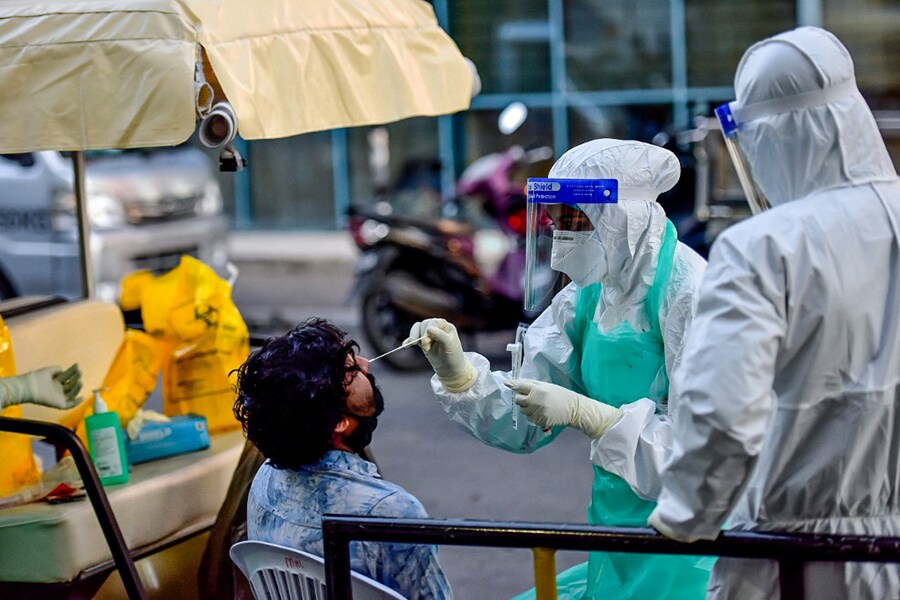
The Maldives lured tourists back. Now it needs nurses
Though 59% of the population has received at least one dose of a Covid-19 vaccine, the recent surge took a heavy toll with nearly half of the country's 200 Covid-19 deaths being reported in May
 A medical worker (C) wearing full protective gear takes a swab sample from a man to be tested for the COVID-19 coronavirus on a street in Male on June 5, 2020.
A medical worker (C) wearing full protective gear takes a swab sample from a man to be tested for the COVID-19 coronavirus on a street in Male on June 5, 2020.
Image: Ahmed SHURAU / AFP
MALÉ, Maldives — The largest COVID-19 treatment facility in the Maldives has nearly 300 beds and a steady supply of oxygen. But as the country reported some of the world’s highest caseloads per capita last month, COVID wards ran low on another essential resource: employees.
“At worst, we had one nurse to attend to 20 patients in the general wards,” said Mariya Saeed, the head of the Hulhumalé Medical Facility in Malé, the capital. “We needed human resources to provide proper care to the many bedridden elderly, but the nurses were exhausted.”
The pandemic has triggered shortages of health workers around the world, forcing governments to scramble. Spain, for instance, launched an emergency plan last year to recruit medical students and retired doctors for COVID duty. And in India last month, Prime Minister Narendra Modi asked local officials to start recruiting final year medical students.
But the Maldives, an archipelago of about 1,200 islands in the Indian Ocean, faces unique challenges. It can’t easily call up masses of students because it has only one university with a school of medicine. And it can’t rely just on its citizens, because its health care system depends largely on foreign workers. Many of those doctors and nurses come from India, a country that is facing its own gargantuan outbreak.
One result is that the Maldives, which has otherwise tackled the pandemic with meticulous attention to detail, isn’t sure how to staff its hospitals for the next crisis.
©2019 New York Times News Service




